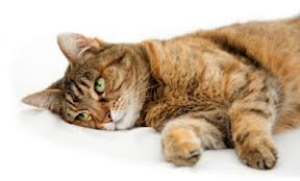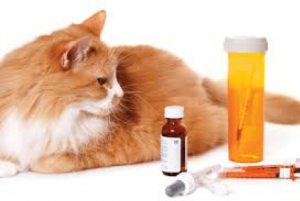
Cats are not the most adept of animals when it comes to showing emotion, as they are naturally introverted. This can mean that recognizing pain in your furry feline can be somewhat challenging, except maybe in the most extreme of cases. The ability to make such observations is often largely based on your closeness with your feline companion. The process of natural selection has made cats VERY good at masking pain, in an effort to avoid showing weakness to potential predators or suitors alike. This could render them powerless and therefore more vulnerable…
Scientifically put, pain can be described to mean a multi-dimensional experience involving elements of a sensory and emotional nature. To break it down further, pain is not just about the physical sensation, but the manner in which it affects your emotional and mental well-being. The suffering is associated with unpleasantness.

For veterinarians and other animal health professionals, one of the ways in which they are able to determine pain in animals is to evaluate the patient’s response and general demeanour upon examination.
A wealth of research exists in animal behaviour, and feline behavioural experts have reached a consensus on the signs of pain in cats. Any of the signs listed below can be sufficient to indicate pain, but when observed separately it would be difficult to determine with absolute certainty.
So if your cat is displaying any of the following characteristics, it can be considered as a sign that he is probably hurting.
- Weight loss
- Abnormal gait
- Reluctance to move or play
- Negative reaction to palpation (pressing gently on a particular area)
- Withdrawn or hiding from others
- Lack of grooming
- Loss of Appetite
- Disinclination to engage in physical activity
- Overall activity decrease
- Less rubbing toward people
- Lameness
- Temperamental
- Growling
- Excessive licking of a specific body part
- Head hanging low
- Squinting
- Disruptions in feeding schedules
- Avoiding brightly lit areas
- Groaning
- Difficulty to urinate/pass stools
- Tail flicking

It is important to note that there are other factors that may be associated with the symptoms above that do not necessarily indicated pain and discomfort. In certain instances an abnormal gait may be caused by some neurological disorders which may affect balance.
In cases where it is difficult to accurately identify another reason for a cat’s behavioural change veterinary professionals often resort to a tried and tested veterinary trick – response to treatment. The feline patient is treated with a popular kitty pain reliever known as buprenorphine, and if his behaviour returns to normal, then it can be confirmed that pain was the root cause.

